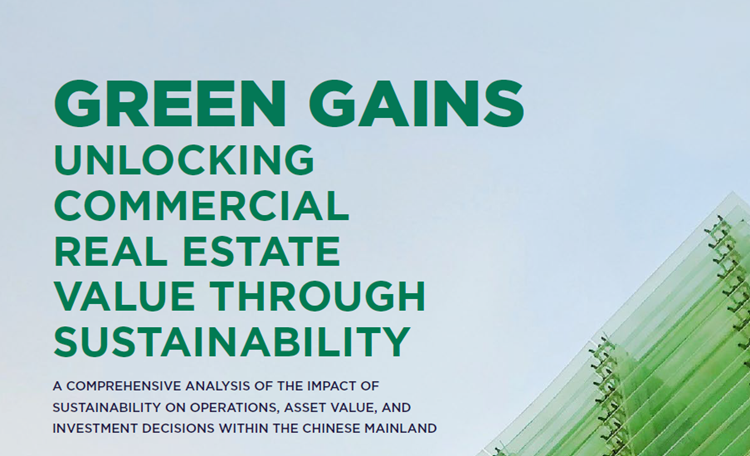The Logistics Real Estate Market on the Chinese Mainland Shows Signs of Stabilization Amid Ongoing Consumer and Industrial Demand
Cushman & Wakefield has published its inaugural global logistics and industrial outlook, Waypoint 2025, which highlights a significant shift in the sector as global supply chains are reconfigured and cost pressures evolve. Drawing on insights from more than 120 markets worldwide, the report shows that in the near term, the balance of power is tilting towards landlords, with wide-reaching implications for occupiers, investors, and developers.
The research reveals that globally, the proportion of tenant-favorable markets is expected to fall sharply from 52% today to just 28% by 2028. This change is being driven by constrained supply, robust demand, and rising costs across key inputs such as rent, labor, construction materials, and electricity. At the same time, landlord-favorable markets are forecast to rise from 24% to 35%, signaling a more competitive leasing environment in the years ahead for occupiers.
In Asia Pacific (APAC), fundamentals remain strong but market conditions are becoming more nuanced. The region currently offers more balanced conditions, with 24% favoring landlords and 33% favoring tenants. Over the next three years, markets in the region are expected to move away from a balanced, neutral position toward more polarizing tenant- and landlord-favorable market conditions. Neutral markets are expected to decline to 29% from the current 42%, while tenant-friendly markets are anticipated to grow to 38% from 33%. Similarly, landlord-favorable markets are expected to rise to 33%, up from 24%.
Dr. Dominic Brown, Head of International Research, Cushman & Wakefield said, “Asia Pacific markets are diverging, with Australia and Southeast Asia seeing a shift towards landlord-favorable conditions, while other parts of the region face rising vacancies and tenant-friendly dynamics. Nevertheless, 62% of APAC markets still expect rental growth in the next three years, driven by robust occupier demand, strategic manufacturing shifts and the region’s cost competitiveness in labor and energy.”
In terms of labor costs, APAC remains highly competitive, with countries like India, Vietnam, Philippines, and Indonesia having significantly lower wages. China has moved toward higher value-added manufacturing, with wages around 50% of the global average.
Another highlight of the report is that general manufacturing, retail distribution and e-commerce distribution are the top three key drivers of demand for logistics and industrial space in Asia Pacific. This is very much aligned to what is being seen across the world. High-tech and automotive manufacturing have also been identified as drivers of occupier demand in APAC over the next three years.
Dennis Yeo, Head of Investor Services and Logistics & Industrial, APAC, Cushman & Wakefield said: “Asia Pacific continues to demonstrate resilience, with markets such as India and Vietnam seeing sustained occupier demand. However, rising vacancy in some subregions, driven by a surge in new supply means that a one-size-fits-all approach no longer works. Businesses must adopt granular, market-specific strategies that account for local cost structures, infrastructure readiness, and automation potential.”
The logistics market on the Chinese mainland continued its path to stabilization and recovery in 2024, underpinned by favorable structural drivers. Key catalysts include the emergence of industrial clustering, the acceleration of new logistics productivity, and a more balanced supply-demand environment, all of which are reinforcing the market’s long-term fundamentals.
In the consumer segment, the rapid rise of new e-commerce formats — notably live-streaming commerce and instant retail — has been instrumental in driving online consumption. Combined with the effective rollout of consumer goods trade-in policies, these trends have led to sustained growth in online retail sales of physical goods, bolstering demand for high-quality logistics infrastructure.
On the industrial front, strong logistics demand for industrial goods has been observed, supported by continued manufacturing activity and supply chain modernization. This dual-sector momentum — consumer and industrial — is injecting fresh vitality into the premium logistics warehouse market, reinforcing its status as a core asset class in the evolving logistics ecosystem on the Chinese mainland.
Tony Su, Managing Director, Head of Industrial & Logistics Property Services, China, Cushman & Wakefield said: “The transformation and upgrading of key industries are fueling renewed demand for warehouse space. This resurgence in leasing activity is expected to absorb incoming supply efficiently, supporting steady growth in both occupancy levels and rental rates—particularly within the premium logistics warehouse segment. These dynamics position the sector for healthier and more sustainable long-term development.”
The report concludes that resilience and diversity in supply chains will be essential for navigating both short- and long-term market shocks. Businesses that act decisively and strategically will be best placed to thrive in this evolving industrial landscape.
The full report, including regional breakdowns of rental levels, market conditions and vacancy projections, energy and labor cost comparisons, and analysis of demand drivers such as e-commerce and manufacturing, is available at Waypoint 2025.
Note to Editors
Waypoint 2025 is Cushman & Wakefield’s inaugural global logistics & industrial research report which includes results from a survey of Cushman & Wakefield logistics and industrial market-facing colleagues for 127 markets worldwide. The survey was conducted from 7-18th April 2025, after the Trump Administration announced the suspension of most higher tariff rates for 90 days, while maintaining the 10% levy on nearly all global imports.
About Cushman & Wakefield
Cushman & Wakefield (NYSE: CWK) is a leading global commercial real estate services firm for property owners and occupiers with approximately 52,000 employees in nearly 400 offices and 60 countries. In Greater China, a network of 23 offices serves local markets across the region. In 2024, the firm reported revenue of $9.4 billion across its core services of Valuation, Consulting, Project & Development Services, Capital Markets, Project & Occupier Services, Industrial & Logistics, Retail, and others. Built around the belief that Better never settles, the firm receives numerous industry and business accolades for its award-winning culture. For additional information, visit
www.cushmanwakefield.com.



